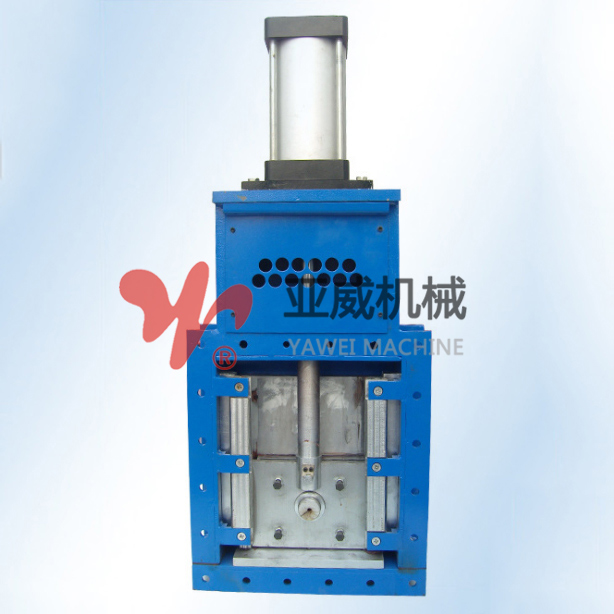Structural characteristics and working principle of pneumatic flow valve
- Categories:Company News
- Author:
- Origin:
- Time of issue:2021-12-17
- Views:
(Summary description)The pneumatic flow method can be used to control the flow of the fluid by changing the interception section or the length of the interception. The one-way valve and the throttle valve can be connected in parallel to form a pneumatic flow valve, in which the one-way joint in the pneumatic flow valve. Flow valves and throttle valves are relatively simple flow control valves. In the quantitative hydraulic system, these two kinds of valves cooperate with each other to form three different speed control systems.
Structural characteristics and working principle of pneumatic flow valve
(Summary description)The pneumatic flow method can be used to control the flow of the fluid by changing the interception section or the length of the interception. The one-way valve and the throttle valve can be connected in parallel to form a pneumatic flow valve, in which the one-way joint in the pneumatic flow valve. Flow valves and throttle valves are relatively simple flow control valves. In the quantitative hydraulic system, these two kinds of valves cooperate with each other to form three different speed control systems.
- Categories:Company News
- Author:
- Origin:
- Time of issue:2021-12-17
- Views:
The pneumatic flow method can be used to control the flow of the fluid by changing the interception section or the length of the interception. The one-way valve and the throttle valve can be connected in parallel to form a pneumatic flow valve, in which the one-way joint in the pneumatic flow valve. Flow valves and throttle valves are relatively simple flow control valves. In the quantitative hydraulic system, these two valves cooperate with each other to form three different speed control systems. There is no negative flow feedback function in the pneumatic flow valve, so it cannot be compensated. The change results in unstable flow rate, which can often be used in situations where the load changes little or is relatively stable. Next, I will talk to you about the structural characteristics and working principle of the pneumatic flow valve.

The pneumatic flow valve includes a valve seat, a valve body and a vertebral column valve core, in which a conducting port and a blocking port are set in the valve body part, and the valve seat is installed in the inner valve body. The valve seat has a cavity, and The valve seat and the valve body are connected by seals, and many through holes are set at the waist of the valve seat. The valve core is installed inside the cavity of the valve seat, and can slide back and forth along the valve seat cavity to avoid blocking or be away from the through-hole part, and it has an orifice passing through the valve core and the core head.
The pneumatic flow valve is also provided with a cut-off opening at the top of the valve seat. There is a channel between the valve seat and the valve body, that is to say, when the refrigerant is participating in the refrigeration, there will be a conduction port input, and then the valve core It will be pushed away, and the through-hole part of the refrigerant will flow out from the through-hole in the valve seat, and then flow out through the throttle port after passing through the channel. When the refrigerant participates in the heating process, it will be input from the throttling port, and then sent to the valve seat from the throttling opening, and then the valve core will block the refrigerant through the through hole, and it will be assisted by the throttling hole. throttling, and then conduct unidirectional conduction through the output of the conduction port.
The mechanical impurities in the oil of the pneumatic flow valve or the colloid, asphalt, carbon residue and other pollutants precipitated by oxidation are accumulated in the throttling gap. Since the oil is aged or squeezed to generate charged polar molecules, and there is a potential difference on the metal surface of the throttling gap, the polar molecules are adsorbed to the surface of the gap to form a firm boundary adsorption layer. The thickness of the adsorption layer is generally 5~8 microns, thus affecting the size of the throttling gap. When the above accumulation and adsorbate grow to a certain thickness, they will be washed away by the liquid flow, and then reattached to the valve port.
When the pressure difference of the valve port of the pneumatic flow valve is large, due to the high temperature of the valve port, the degree of extrusion of the liquid is enhanced, and the metal surface is also more susceptible to friction to form a potential difference, so it is easy to cause blockage when the pressure difference is large.
Scan the QR code to read on your phone
Related News
YAWEI MACHINE
Nantong Yawei Machinery Manufacture Co., Ltd
Add: No.88, Fuqian Road, Baidian Industrial Zone, Hai’an, Jiangsu
Tel: 86-513-88402039
Fax: 86-513-88405118
E-mail: yawei@ywjx.net
1688: http://shop1478192379609.1688.com

QR code
Copyright © 2022 Nantong Yawei Machinery Manufacture Co., Ltd -- All Rights Reserved. 苏ICP备12075774号 Powered by 300.cn SEO



 Whatsapp
Whatsapp

 E-mail
E-mail Tel
Tel